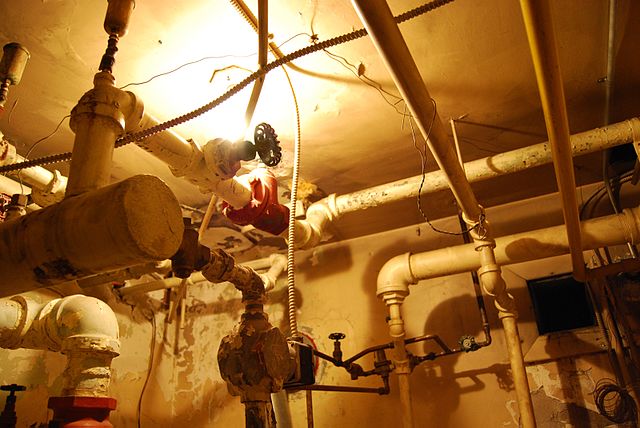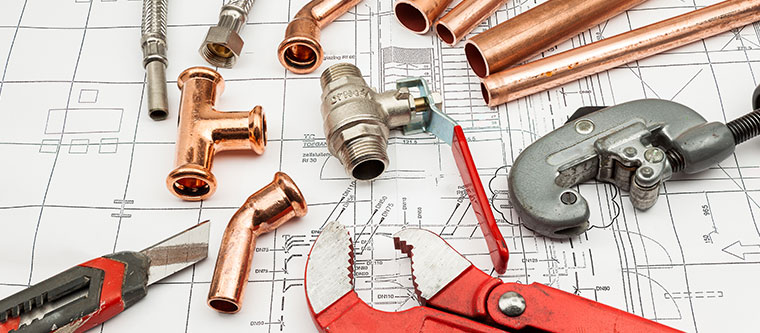Just about every person maintains his or her own opinion on the subject of Understanding Your Home's Plumbing Anatomy.

Comprehending exactly how your home's plumbing system works is vital for every homeowner. From providing clean water for alcohol consumption, food preparation, and bathing to safely removing wastewater, a properly maintained plumbing system is critical for your family's wellness and comfort. In this comprehensive guide, we'll discover the complex network that makes up your home's pipes and offer tips on upkeep, upgrades, and dealing with typical concerns.
Intro
Your home's plumbing system is greater than just a network of pipes; it's a complex system that ensures you have accessibility to tidy water and effective wastewater elimination. Knowing its elements and how they interact can assist you protect against expensive repairs and make sure every little thing runs efficiently.
Basic Elements of a Plumbing System
Pipelines and Tubing
At the heart of your pipes system are the pipelines and tubing that bring water throughout your home. These can be constructed from different products such as copper, PVC, or PEX, each with its advantages in regards to durability and cost-effectiveness.
Fixtures: Sinks, Toilets, Showers, and so on.
Components like sinks, bathrooms, showers, and bathtubs are where water is utilized in your house. Comprehending just how these components attach to the pipes system helps in diagnosing issues and intending upgrades.
Shutoffs and Shut-off Points
Shutoffs control the flow of water in your pipes system. Shut-off valves are important throughout emergencies or when you need to make repair services, enabling you to separate parts of the system without disrupting water flow to the whole residence.
Supply Of Water System
Key Water Line
The major water line connects your home to the municipal supply of water or a personal well. It's where water enters your home and is dispersed to various fixtures.
Water Meter and Pressure Regulator
The water meter steps your water usage, while a stress regulatory authority guarantees that water moves at a risk-free pressure throughout your home's pipes system, avoiding damages to pipelines and components.
Cold Water vs. Hot Water Lines
Understanding the distinction in between cold water lines, which provide water directly from the main, and warm water lines, which lug warmed water from the water heater, helps in repairing and preparing for upgrades.
Drainage System
Drain Piping and Traps
Drain pipelines bring wastewater away from sinks, showers, and commodes to the drain or septic tank. Catches avoid sewer gases from entering your home and additionally catch debris that can trigger clogs.
Air flow Pipelines
Ventilation pipelines enable air into the water drainage system, stopping suction that could reduce drain and cause catches to empty. Proper air flow is important for keeping the integrity of your pipes system.
Value of Appropriate Drainage
Making certain proper drainage prevents back-ups and water damages. Frequently cleaning drains and keeping catches can avoid pricey repair services and prolong the life of your plumbing system.
Water Furnace
Kinds Of Water Heaters
Hot water heater can be tankless or conventional tank-style. Tankless heaters warm water on demand, while storage tanks save warmed water for instant usage.
Exactly How Water Heaters Connect to the Pipes System
Comprehending just how water heaters attach to both the cold water supply and warm water distribution lines aids in identifying issues like inadequate warm water or leaks.
Maintenance Tips for Water Heaters
On a regular basis flushing your hot water heater to eliminate debris, examining the temperature setups, and examining for leakages can prolong its lifespan and boost power efficiency.
Typical Plumbing Issues
Leakages and Their Causes
Leakages can take place because of aging pipelines, loosened fittings, or high water stress. Attending to leaks immediately prevents water damages and mold growth.
Blockages and Clogs
Blockages in drains and commodes are typically caused by purging non-flushable products or a build-up of oil and hair. Utilizing drain screens and bearing in mind what drops your drains can protect against obstructions.
Indications of Plumbing Troubles to Look For
Low water pressure, slow-moving drains, foul odors, or unusually high water costs are indications of potential pipes issues that ought to be addressed without delay.
Plumbing Maintenance Tips
Normal Evaluations and Checks
Set up yearly plumbing examinations to catch issues early. Seek signs of leakages, rust, or mineral build-up in taps and showerheads.
DIY Upkeep Tasks
Easy jobs like cleaning tap aerators, checking for commode leakages using color tablets, or shielding exposed pipes in cold environments can protect against major pipes issues.
When to Call a Specialist Plumbing
Know when a pipes problem calls for expert expertise. Trying complex repair services without proper understanding can bring about more damages and higher repair service prices.
Updating Your Plumbing System
Reasons for Updating
Updating to water-efficient fixtures or changing old pipes can improve water quality, minimize water costs, and enhance the worth of your home.
Modern Plumbing Technologies and Their Benefits
Check out technologies like wise leak detectors, water-saving bathrooms, and energy-efficient hot water heater that can conserve money and decrease environmental effect.
Price Factors To Consider and ROI
Calculate the in advance prices versus long-term savings when considering pipes upgrades. Several upgrades pay for themselves through decreased energy expenses and less repairs.
Environmental Effect and Preservation
Water-Saving Fixtures and Home Appliances
Setting up low-flow taps, showerheads, and toilets can considerably minimize water use without sacrificing performance.
Tips for Decreasing Water Usage
Basic behaviors like fixing leaks immediately, taking shorter showers, and running complete lots of washing and dishes can conserve water and lower your energy costs.
Eco-Friendly Pipes Options
Take into consideration sustainable plumbing materials like bamboo for flooring, which is durable and environment-friendly, or recycled glass for counter tops.
Emergency situation Readiness
Actions to Take Throughout a Pipes Emergency situation
Know where your shut-off valves are located and how to turn off the supply of water in case of a ruptured pipeline or significant leakage.
Value of Having Emergency Situation Calls Helpful
Maintain call details for neighborhood plumbing professionals or emergency situation solutions easily offered for fast action throughout a plumbing dilemma.
DIY Emergency Fixes (When Appropriate).
Short-term repairs like using duct tape to patch a leaking pipeline or positioning a pail under a trickling tap can lessen damage until a professional plumber gets here.
Final thought.
Comprehending the composition of your home's plumbing system equips you to maintain it effectively, saving money and time on repair services. By complying with regular upkeep regimens and remaining notified about modern pipes modern technologies, you can ensure your pipes system operates efficiently for years ahead.
Exploring Your Homes Plumbing Anatomy
Water Supply System
Main Water Line: This is where water enters your home from the municipal supply or a private well.
Water Meter: Typically located near where the main water line enters the property, it measures the amount of water used.
Shutoff Valve: It s crucial to know where this is in case of emergencies. It allows you to turn off the water supply to the entire house.
Pipes and Fittings: These distribute water throughout your home. Materials can include copper, PVC, or PEX.
Drain-Waste-Vent (DWV) System
Drains: Located in sinks, showers, and tubs, these carry wastewater away.
Traps: U-shaped pipes under sinks that hold standing water, blocking sewer gases from entering the home.
Vents: Pipes that lead from the DWV system to the outside, preventing vacuum formation and allowing gases to escape.
Sewer Line: Carries all wastewater from the home to the municipal sewer system or a septic tank.
Fixtures and Appliances
Sinks, Toilets, and Showers
Dishwashers and Washing Machines
Water Heaters
Maintenance Tips
Regularly check for leaks in exposed pipes and around fixtures.
Inspect the water heater annually for signs of wear.
Clean drains and traps to prevent clogs and odors.
Know how to shut off water to individual fixtures.
When to Call a Professional
Major leaks or burst pipes
Installation of new pipes or fixtures
Septic tank issues
Remodeling projects that involve plumbing changes
Conclusion
Understanding the anatomy of your home's plumbing is key to maintaining a functional and efficient system. Regular checks and knowing when to call in the experts can save you time, money, and stress.
https://www.mavyn.com/blog/exploring-your-homes-plumbing-anatomy

Exploring Your Homes Plumbing Anatomy
Water Supply System
Drain-Waste-Vent (DWV) System
Fixtures and Appliances
Maintenance Tips
When to Call a Professional
Conclusion
Understanding the anatomy of your home's plumbing is key to maintaining a functional and efficient system. Regular checks and knowing when to call in the experts can save you time, money, and stress.
https://www.mavyn.com/blog/exploring-your-homes-plumbing-anatomy
We were shown that editorial on from an associate on our other web address. For those who appreciated our page plz make sure you remember to share it. I praise you for your time. Kindly check our blog back soon.
Visit My Website